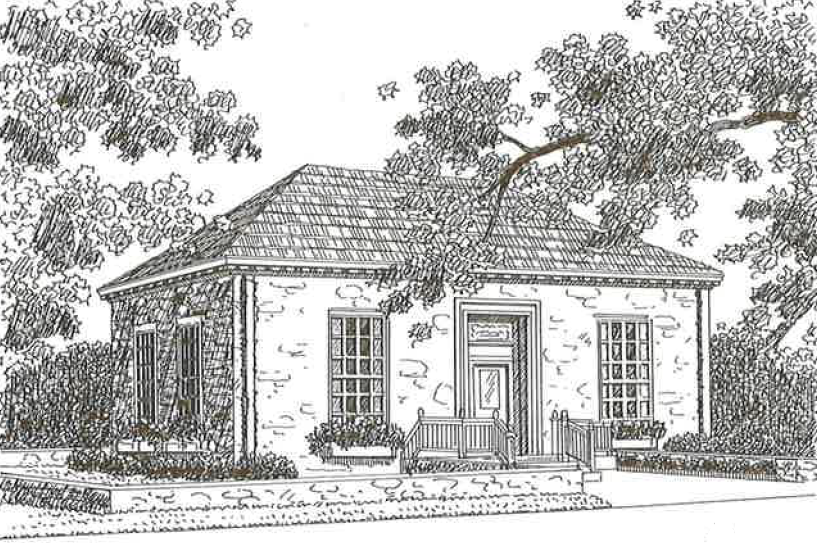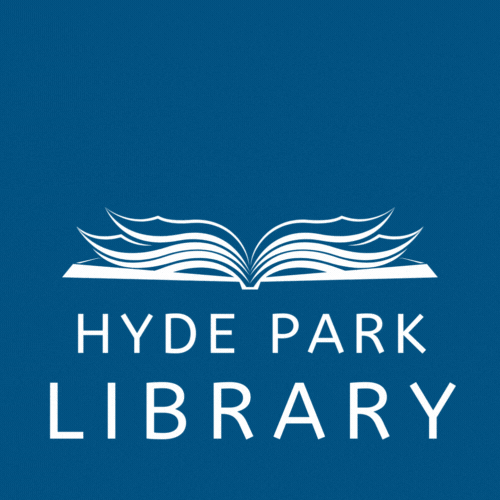The Hyde Park Free Library can trace its origins all the way back to 1895, when Mr. James Roosevelt, FDR’s father, made a donation of 75 books to the Hyde Park Union Free School. These books were placed in the basement of the school under the care of Miss Ida Dumont, a teacher there and the Hyde Park Union Free School’s first librarian.
In 1900, the year of James Roosevelt’s death, the library (now supported by his wife, Sara) moved to nearby St. James Chapel. It was dubbed the “Reading Room” and shelves were installed to hold the increasing number of donated materials. The collection at this point had grown to about 700 items, some donated by Mrs. Frederick Vanderbilt. The primary book donors of the time, however, were Colonel and Mrs. Archibald Rogers, who reportedly sent books “by the clothesbasketful.”
An interesting anecdote from the era describes Mrs. Roosevelt riding horseback to convince the chapel’s Rector Amos Ashton that one modern novel he objected to “had its good points.” She lost the argument and the book was burned.
Through the 1920s, donations continued from the Vanderbilts, the Rogers and Sara Roosevelt. Mrs. Harriet Bradley served as the librarian and held that post for 25 years. Contributions also increasingly came from the local civic group. The library was open Monday and Friday evenings and Wednesday afternoons.
In March of 1926, Sara Roosevelt bought a lot and began work on establishing a library in her deceased husband’s name. Some believe that it was then rector Edward Parsons Newton who urged her to memorialize James Roosevelt with a library rather than with an elaborate mausoleum on the estate. If so, it is somewhat ironic that Dr. Newton never lived to see the completion of the building. He died that year. The building was completed in August of 1927, at a reported cost of $45,000. The Dutch stone structure was suggested by FDR to the architect and was the first public fieldstone structure in Hyde Park.
The new library opened on Friday, August 5th with no fanfare. Borrowers simply went to the new building rather than to the old Reading Room at the chapel. By October of that year, circulation had increased to over 550 books per month. Funding came from individual donations, the community club, member dues and the “rental” of new fiction. Although Mrs. Roosevelt built the library as a private institution, she offered it to the town, who refused to take it on at this point. She considered an endowment plan, but her son Franklin advised against this course of action on the grounds that it would be impractical.
In 1929, the James Roosevelt Association was formed, with dues for members amounting to $1 per year. A board of trustees was formed, some appointed by Mrs. Roosevelt and others elected by members. The association sponsored numerous community events, such as carol sings, book reviews, weaving classes and children’s events, with Mrs. Roosevelt meeting the expenses. Sara is recorded as having made a small donation for children’s story hour and so that any child under grade eight could use the library for free in the months of July and August. All of this is reflective of her desire to make the library a community center. Book circulation, however, was limited to association members.
Sara Roosevelt died in 1941 and her son, FDR, assumed responsibility for the library’s expenses (with the exception of the librarian’s salary, which was paid by the board of trustees.) Franklin D. Roosevelt’s own death in 1945 ended the family’s support. With the library’s savings account rapidly dwindling, the executor of the estate decreed that the library must be sold.
In 1947, the Hyde Park Town Board purchased the library from the Roosevelt estate at a cost of $4500, financed as part of a bequest provided by Dr. J. Sterling Bird. Dr. Bird had donated $7000 for the “purpose of establishing and providing a public library” because, before his death in 1900, he had been impressed with the Reading Room at the St. James Chapel. The town board was appointed the trustees of the fund and the Hyde Park Free Library Association was formed with Mrs. George Palmer as president. Mrs. Olive Drabble was appointed librarian and the library was now open to all residents for free. Library hours were extended, the collection was expanded and repairs were made on the building. A charter for state funding was applied for and awarded, meaning that the library would be financially supported both by the state and the town. State library staff was sent to help work on reorganizing the materials and the catalog.
The early years of the free library saw use of the basement rooms as a meeting place for Brownies and the Lion’s Club. When the library was closed, the main floor was also used for organizational meetings for various groups. It was even used as extra classroom space in the 1950s for the Hyde Park Central School District, which paid a rental fee of $75 a month, ten months a year. This proved to be an essential part of the budget. Association president at the time, Mrs. Todd, was quoted as saying that the $750 per year from the Hyde Park Central School District kept the library open during this period.
Through the end of the 1940s and into the 1950s, there was an increased focus on children’s services. Additional juvenile books were made available and the Margaret L. Finch Memorial Children’s corner was established. The “Teen Age Club” met in the largest basement room, which they used as a “hangout, a place to play games, dance to Victrola records or just talk.”
In the 1950s, the library flourished, in large part due to the support of volunteers like the Lions Club and the local American Legion. The Hyde Park Players, an amateur theatrical group, presented a benefit performance for the library during this time period.
In 1959, a new children’s room opened in honor of Dr. Bird. Mrs. Walter Cartwright became the librarian. The collection now comprised of 10,000 books with an average monthly circulation of 3,000 items. This number continued to steadily increase over the years.
The library expanded again in 1981, nearly doubling the floor space and providing a new children’s room and stack area for adult books. This addition was enthusiastically welcomed by the community.
In 2002, through a bequest from the estate of library supporter S. June Keyes, the library board purchased the adjacent 1835 home. This became the Library Annex, which is used for office space and for some library programming.

James Roosevelt with a young FDR
Sara Roosevelt and Franklin
The James Roosevelt Memorial Library



